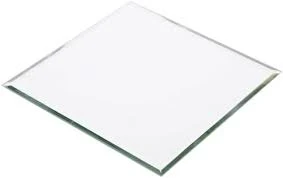

Self Frosting Glass A Blend of Aesthetics and Functionality
In recent years, self frosting glass has emerged as a captivating innovation in the realm of architecture and interior design. This remarkable material stands as a testament to the fusion of cutting-edge technology and modern aesthetics, providing homes and commercial spaces with an intriguing blend of privacy and light.
At its core, self frosting glass is a type of smart glass that can transition between transparent and frosted states at the touch of a button or through a simple application of electricity. This unique feature allows users to control visibility in their respective spaces, offering both flexibility and functionality. Imagine a conference room with a wall of glass that can switch from see-through to opaque during private meetings, or a bathroom that can become a personal sanctuary with the flick of a switch.
The technology behind self frosting glass typically involves the use of liquid crystal displays (LCDs) sandwiched between layers of glass. When an electric current passes through the liquid crystals, they align to create a clear pane, allowing light to filter in while maintaining visibility. Conversely, when the current is switched off, the crystals scatter, producing a frosted appearance that obscures any view while still allowing light to enter. This capability makes self frosting glass an ideal solution for spaces where privacy is paramount, such as offices, hotels, or even residential bathrooms.
Beyond its practical applications, self frosting glass is also an aesthetically pleasing choice. It can seamlessly integrate into a variety of design aesthetics, from ultra-modern minimalist spaces to more traditional settings. The versatility of this material means it can be used for windows, room dividers, shower enclosures, and even as feature walls that reinvent the ambiance of a room. The play of light and shadow through the glass can create dynamic visual effects, adding depth and interest to interiors.

Moreover, the sustainability aspect of self frosting glass cannot be understated. As societies increasingly focus on energy efficiency and reducing their carbon footprint, smart glass technologies have gained traction. Many versions of self frosting glass come with thermal insulation properties that reduce energy consumption by regulating internal temperatures. By minimizing the need for artificial lighting during the day, these glass products can contribute to lower energy bills and a reduced environmental impact.
From a design perspective, self frosting glass offers an opportunity for creativity and innovation. Designers can utilize it to create unique features that not only serve a functional purpose but also provoke thought and inspire conversation. For instance, architects are beginning to explore ways to incorporate self frosting glass into building facades, allowing structures to interact dynamically with their surroundings throughout the day.
However, like any technology, self frosting glass is not without its challenges. The initial investment can be higher compared to traditional glass options, which might deter some potential users. Additionally, careful consideration must be taken regarding the electrical systems required to operate the glass, particularly in larger installations. Designers and architects must also be mindful of the maintenance and durability of the material, ensuring that it can withstand the demands of its intended use.
In conclusion, self frosting glass represents a remarkable convergence of technology, design, and functionality. It offers unprecedented privacy, contributes to energy efficiency, and elevates the aesthetic quality of spaces. As more people become aware of its benefits, it is likely that self frosting glass will become a staple in both residential and commercial environments. With continued advancements in smart glass technology, the future looks bright for this innovative material, promising to redefine the boundaries of contemporary design and enhance the experience of space in profound ways.